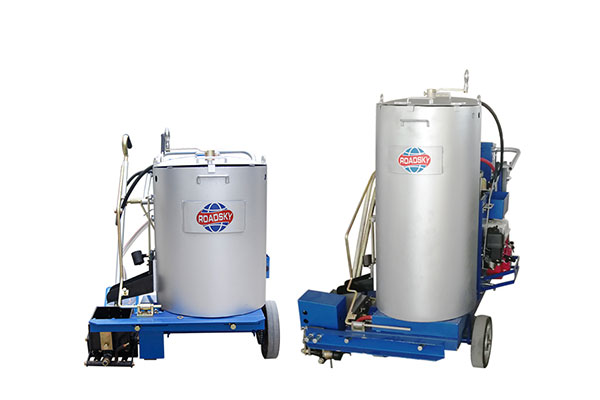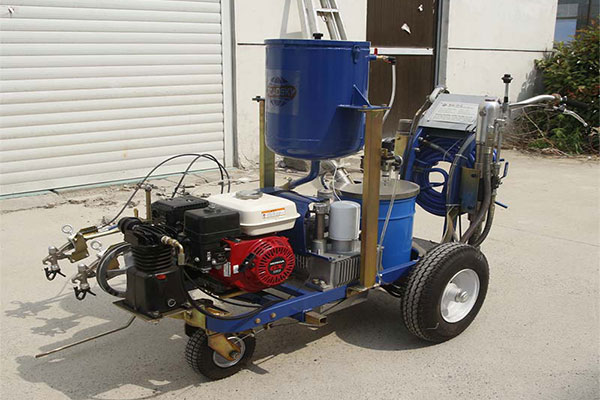Thermoplastic vs Cold Plastic Road Marking Machines
When it comes to marking roads and highways, two popular options are thermoplastic and cold plastic road marking machines. Both options have their pros and cons, and the choice ultimately comes down to the specific needs and requirements of the project.
Thermoplastic Road Marking Machines
Thermoplastic road marking machines use heat to melt a mixture of pigments, binders, and filler materials, which are then applied to the road surface. The mixture quickly cools and hardens, creating a highly durable and long-lasting road marking.

Advantages of Thermoplastic Road Marking Machines
- Service Life: Thermoplastic markings can last up to ten times longer than their cold plastic counterparts, making them an ideal choice for high-traffic areas or roads that experience extreme weather conditions.
- Reflective properties: The materials used in thermoplastic markings are highly reflective, making them easily visible even in low-light conditions. This makes them a popular choice for highways and roads where safety is a top concern.
Disadvantages of Thermoplastic Road Marking Machines
There are some drawbacks to using thermoplastic road marking machines. One of the biggest challenges is the high cost of equipment and materials. Additionally, the application process can be time-consuming and labor-intensive, requiring trained professionals to operate the machine and apply the markings correctly.
Cold Plastic Road Marking Machines
Cold plastic road marking machines use a pre-mixed, two-component system that is applied directly to the road surface. The material dries quickly and creates a durable and long-lasting marking that can withstand heavy traffic and extreme weather conditions.

Advantages of Cold Plastic Road Marking Machines
- Versatility: The material can be applied to a wide range of surfaces, including concrete, asphalt, and even brick. Additionally, the application process is faster and less labor-intensive than thermoplastic, making it a popular choice for smaller projects or areas with limited resources.
- Cost-effectiveness: The equipment and materials are typically less expensive than those used in thermoplastic road marking machines, making them an ideal choice for projects with a limited budget.
Disadvantages of Cold Plastic Road Marking Machines
There are also some disadvantages to using cold plastic road marking machines. The markings are not as reflective as thermoplastic, making them less visible in low-light conditions. Additionally, they may not last as long as thermoplastic markings, requiring more frequent reapplication.
Which Road Marking Machine is Right for You?
The choice between thermoplastic and cold plastic road marking machines ultimately comes down to the specific needs and requirements of your project. If longevity and visibility are top concerns, thermoplastic may be the best choice. However, if cost-effectiveness and versatility are more important, cold plastic may be the way to go.
RoadskyMarking is a professional road marking machine manufacturer and supplier, if you want to know more about the two products, you can contact us directly.
Conclusion
Both thermoplastic and cold plastic road marking machines have their advantages and disadvantages. By understanding the differences between the two and considering your specific needs and requirements, you can choose the right option for your project and ensure a long-lasting and durable road marking.

